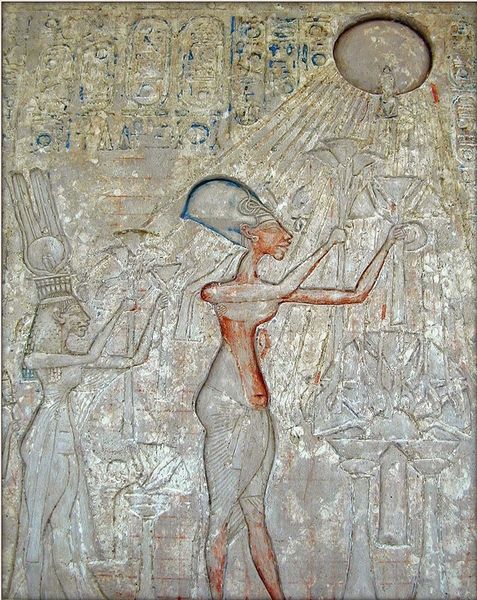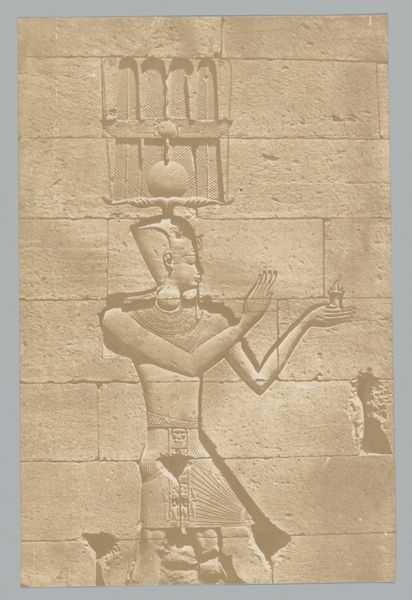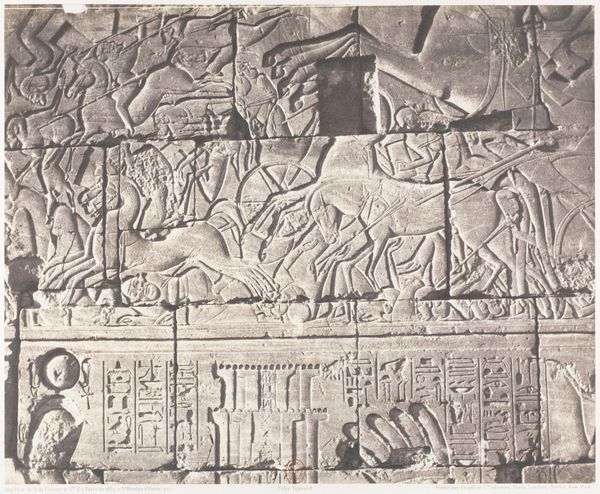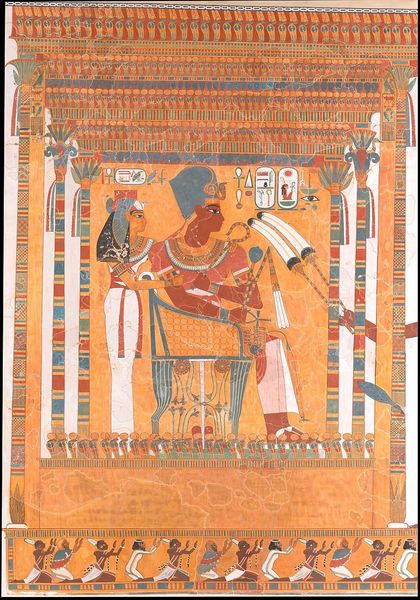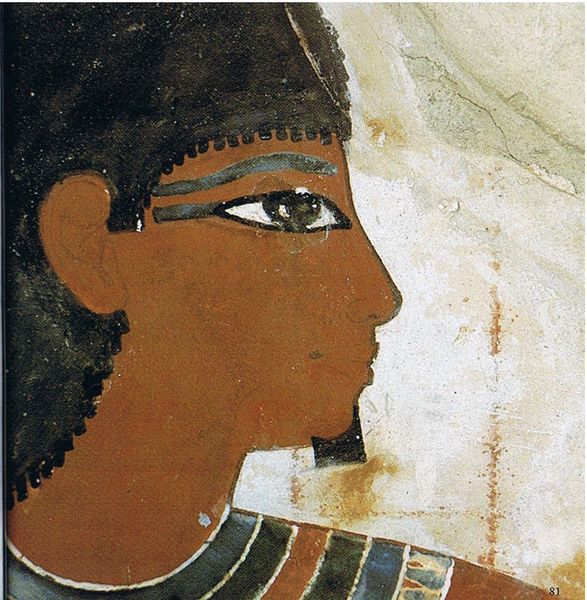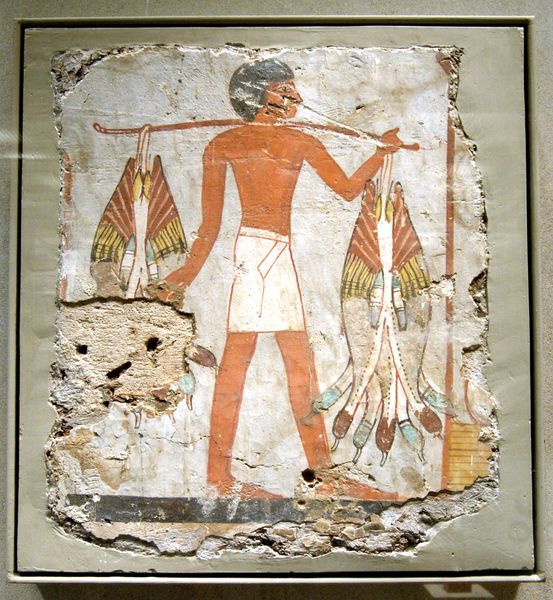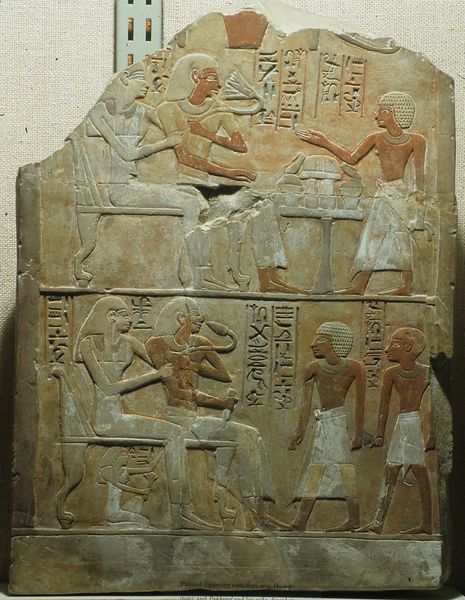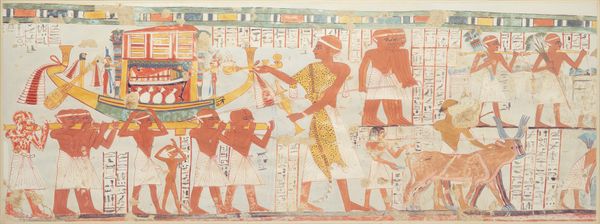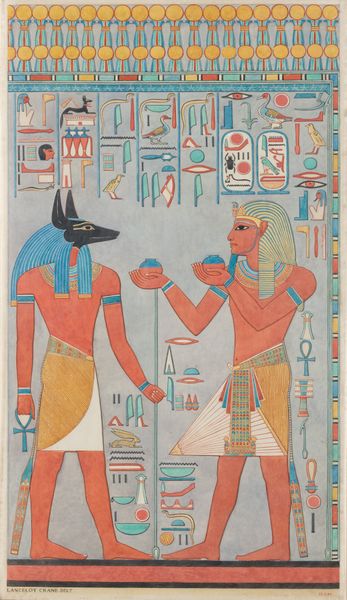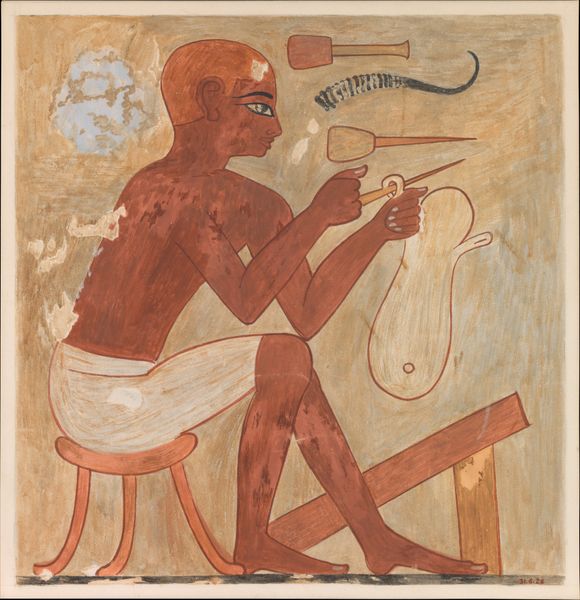
Detail of the Stone Shrine from the House of Panehesy Adjacent to the Aten Temple 1340 BC
0:00
0:00
carving, relief, sculpture
#
portrait
#
carving
#
head
#
relief
#
ancient-egyptian-art
#
figuration
#
ancient-mediterranean
#
sculpture
#
history-painting
Copyright: Public domain
Editor: This is a relief carving from the Stone Shrine of Panehesy, dating back to 1340 BC in Ancient Egypt. I’m immediately struck by the clean, flowing lines and the regimented geometry. What do you see when you look at it? Curator: The formal properties here are paramount. Note the incised lines: precise and deliberate, they define the figures. How does the sculptor create a sense of depth using only subtle variations in relief? Editor: It almost feels flattened, though, doesn’t it? Like the artist is more concerned with presenting a clear image than a realistic one. Curator: Precisely. This aesthetic choice informs the composition. It prioritizes symbolism and legibility over naturalism. The flatness contributes to the timeless quality, an effect of removing transient, individualized detail. Do you see the hierarchy of scale in the composition? Editor: Yes, one figure is larger than the others, and the attention to detail on their headdress sets them apart, it feels almost divine, somehow... Curator: Good. The use of varying scales, rigid lines, and carefully constructed forms emphasizes the symbolic weight, the inherent meaning beyond just representation, right? It directs our gaze and reinforces a structured narrative. Editor: So, by focusing on these formal elements – the lines, the relief, the scale – we can understand how the artist communicated power and status within the visual language of ancient Egypt? Curator: Yes. Understanding how the elements function allows a broader appreciation, the way the artist manipulates the material and design, giving life to ancient intentions. Editor: This really changed how I look at the piece and I am noticing so much more detail now! Curator: Me too! And together, our dialogue helped reveal what would otherwise have been hidden.
Comments
No comments
Be the first to comment and join the conversation on the ultimate creative platform.
